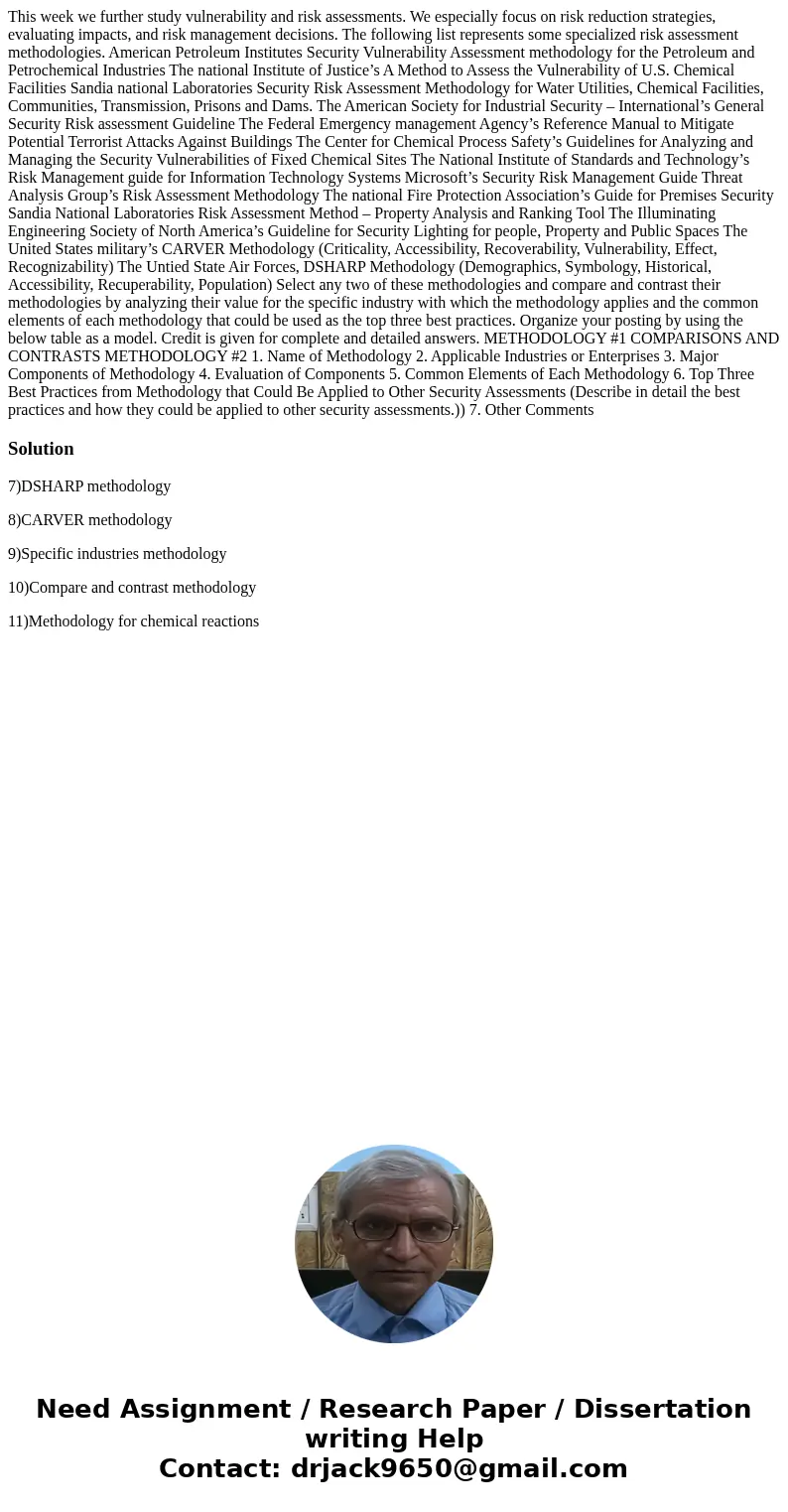This week we further study vulnerability and risk assessment
This week we further study vulnerability and risk assessments. We especially focus on risk reduction strategies, evaluating impacts, and risk management decisions. The following list represents some specialized risk assessment methodologies. American Petroleum Institutes Security Vulnerability Assessment methodology for the Petroleum and Petrochemical Industries The national Institute of Justice’s A Method to Assess the Vulnerability of U.S. Chemical Facilities Sandia national Laboratories Security Risk Assessment Methodology for Water Utilities, Chemical Facilities, Communities, Transmission, Prisons and Dams. The American Society for Industrial Security – International’s General Security Risk assessment Guideline The Federal Emergency management Agency’s Reference Manual to Mitigate Potential Terrorist Attacks Against Buildings The Center for Chemical Process Safety’s Guidelines for Analyzing and Managing the Security Vulnerabilities of Fixed Chemical Sites The National Institute of Standards and Technology’s Risk Management guide for Information Technology Systems Microsoft’s Security Risk Management Guide Threat Analysis Group’s Risk Assessment Methodology The national Fire Protection Association’s Guide for Premises Security Sandia National Laboratories Risk Assessment Method – Property Analysis and Ranking Tool The Illuminating Engineering Society of North America’s Guideline for Security Lighting for people, Property and Public Spaces The United States military’s CARVER Methodology (Criticality, Accessibility, Recoverability, Vulnerability, Effect, Recognizability) The Untied State Air Forces, DSHARP Methodology (Demographics, Symbology, Historical, Accessibility, Recuperability, Population) Select any two of these methodologies and compare and contrast their methodologies by analyzing their value for the specific industry with which the methodology applies and the common elements of each methodology that could be used as the top three best practices. Organize your posting by using the below table as a model. Credit is given for complete and detailed answers. METHODOLOGY #1 COMPARISONS AND CONTRASTS METHODOLOGY #2 1. Name of Methodology 2. Applicable Industries or Enterprises 3. Major Components of Methodology 4. Evaluation of Components 5. Common Elements of Each Methodology 6. Top Three Best Practices from Methodology that Could Be Applied to Other Security Assessments (Describe in detail the best practices and how they could be applied to other security assessments.)) 7. Other Comments
Solution
7)DSHARP methodology
8)CARVER methodology
9)Specific industries methodology
10)Compare and contrast methodology
11)Methodology for chemical reactions

 Homework Sourse
Homework Sourse